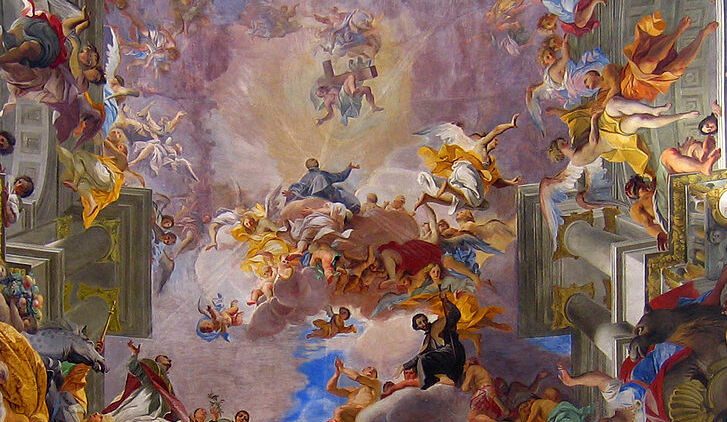Baroque ceiling painting: a window to heaven.
Between the end of the 16th century and the beginning of the 17th century, a new aesthetic and ideological movement emerged in Italy that would permeate the artistic and literary production of the peninsula and the entire continent.
The Baroque conquered the European courts with its approach so far removed from earlier Mannerism: a triumph of invention over imitation, a celebration of emphasis and strangeness, a clear intention to surprise and impress, in stark contrast to Classicism.
The spectacularity sought by this movement is expressed to a large extent with impressive and sumptuous ceilings decorated with frescoes. – The goal is to amaze the viewer and fool their eyes, using illusionistic painting to recreate three-dimensional effects. The architectural barrier thus becomes a springboard to represent a scene halfway between reality and fiction, creating unreal spaces that mix earth and sky (like the ceiling of the church of Sant’Ignazio in Rome painted by Andrea Pozzo ).

